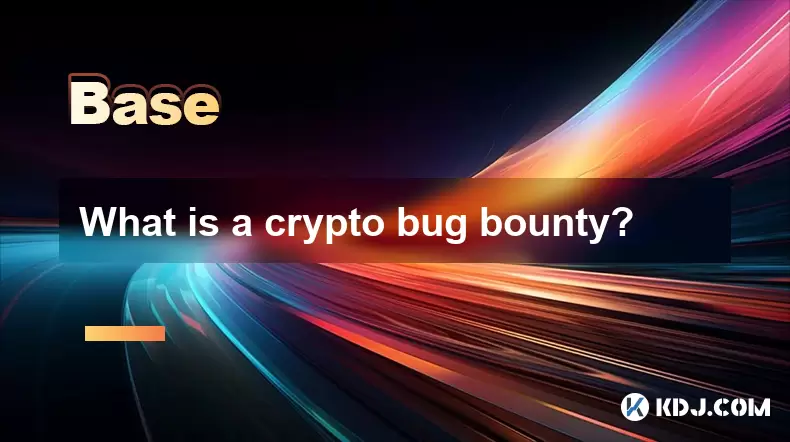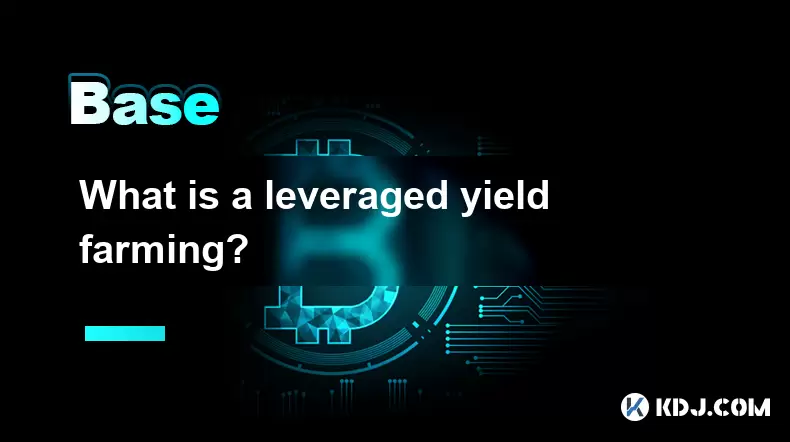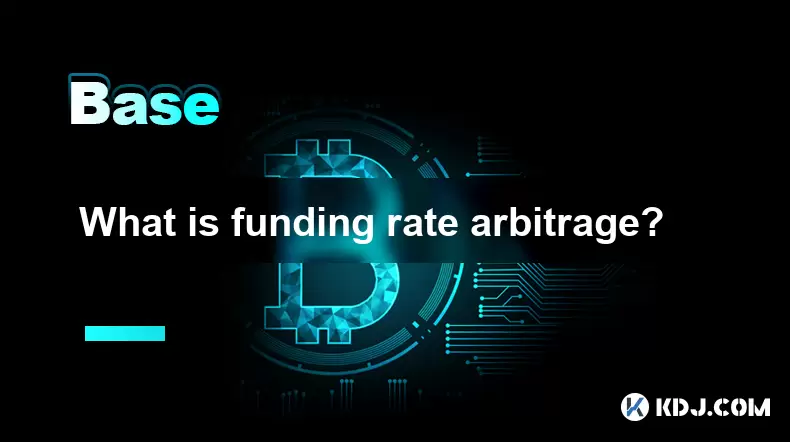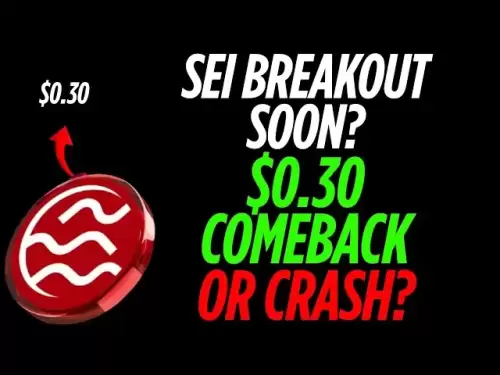-
 Bitcoin
Bitcoin $109,583.2239
0.19% -
 Ethereum
Ethereum $2,583.4612
0.48% -
 Tether USDt
Tether USDt $1.0003
-0.04% -
 XRP
XRP $2.2681
0.70% -
 BNB
BNB $659.9218
-0.52% -
 Solana
Solana $151.4961
-0.37% -
 USDC
USDC $0.9999
-0.02% -
 TRON
TRON $0.2861
1.20% -
 Dogecoin
Dogecoin $0.1718
0.04% -
 Cardano
Cardano $0.5960
-0.07% -
 Hyperliquid
Hyperliquid $40.1233
2.85% -
 Sui
Sui $2.9974
2.48% -
 Bitcoin Cash
Bitcoin Cash $497.1279
-1.76% -
 Chainlink
Chainlink $13.7275
-0.22% -
 UNUS SED LEO
UNUS SED LEO $9.0241
0.70% -
 Avalanche
Avalanche $18.5536
-0.88% -
 Stellar
Stellar $0.2421
1.39% -
 Toncoin
Toncoin $2.8593
-0.51% -
 Shiba Inu
Shiba Inu $0.0...01187
-0.07% -
 Litecoin
Litecoin $90.0023
2.90% -
 Hedera
Hedera $0.1590
2.79% -
 Monero
Monero $322.1495
0.00% -
 Polkadot
Polkadot $3.5453
-1.00% -
 Dai
Dai $1.0000
-0.01% -
 Bitget Token
Bitget Token $4.5733
-1.06% -
 Ethena USDe
Ethena USDe $1.0002
-0.01% -
 Uniswap
Uniswap $7.6345
3.03% -
 Aave
Aave $279.2583
0.47% -
 Pepe
Pepe $0.0...01003
-1.52% -
 Pi
Pi $0.4941
-0.32%
What is a crypto bug bounty?
Crypto bug bounty programs reward ethical hackers for finding and reporting blockchain vulnerabilities, enhancing security while offering lucrative rewards in cryptocurrency.
Jul 03, 2025 at 09:42 pm

Understanding the Concept of a Crypto Bug Bounty
A crypto bug bounty is a program initiated by blockchain projects or cryptocurrency platforms to encourage security researchers and ethical hackers to identify and report vulnerabilities in their systems. These programs are crucial in maintaining the integrity and security of decentralized applications, smart contracts, and other blockchain-based technologies. In return for discovering and disclosing these flaws responsibly, participants can receive monetary rewards, often paid out in cryptocurrency.
The core idea behind a crypto bug bounty initiative is to leverage the global community of cybersecurity experts to proactively find weaknesses before malicious actors exploit them. This collaborative approach helps reduce the risk of hacks, thefts, or system failures that could compromise user funds or data.
Bug bounty programs typically outline specific rules regarding eligible vulnerabilities, submission processes, and reward structures.
How Does a Crypto Bug Bounty Program Work?
Crypto bug bounty programs operate under structured frameworks that define how researchers can participate. Most platforms use third-party platforms like HackerOne or Immunefi to manage submissions and coordinate with ethical hackers. These platforms provide standardized templates and workflows for reporting issues securely.
Participants must first register for the program and agree to its terms of service. Once enrolled, they can begin analyzing the project’s codebase, APIs, smart contracts, and front-end interfaces for potential bugs.
- Researchers identify a vulnerability that falls within the scope defined by the program.
- They then prepare a detailed report including steps to reproduce the issue and technical impact.
- The report is submitted through the designated platform where it undergoes verification by the project team or platform moderators.
- Upon confirmation, the researcher receives a reward based on the severity and uniqueness of the reported bug.
This process ensures transparency and fairness while protecting both the platform and the reporter from misuse or exploitation.
Types of Vulnerabilities Targeted in Crypto Bug Bounties
Not all bugs qualify for rewards in a crypto bug bounty program. Each initiative defines a clear scope outlining which types of vulnerabilities are eligible for rewards. Commonly targeted issues include:
- Smart contract vulnerabilities, such as reentrancy, integer overflow/underflow, and incorrect access control.
- Front-end exploits, including XSS (Cross-Site Scripting) or CSRF (Cross-Site Request Forgery).
- Back-end API misconfigurations leading to unauthorized access or data leaks.
- Wallet integration flaws that may allow fund manipulation or unauthorized transactions.
- Consensus-related bugs in blockchain protocols that could lead to forks or double-spending attacks.
It's essential for participants to review the program's scope carefully to avoid submitting out-of-scope reports that may be rejected or even penalized.
Each type of vulnerability carries different risk levels, and reward amounts vary accordingly. Some high-severity bugs have fetched rewards exceeding tens of thousands of dollars.
Steps to Participate in a Crypto Bug Bounty Program
For those interested in participating in crypto bug bounty initiatives, here is a breakdown of the necessary steps:
- Research available programs on platforms like Immunefi, HackerOne, or directly through blockchain project websites.
- Carefully read the program’s rules, scope, and reward tiers to understand what qualifies for a bounty.
- Set up a secure environment for testing using tools like Remix IDE, Hardhat, or Truffle for smart contract analysis.
- Conduct manual and automated audits to uncover vulnerabilities.
- Replicate the issue in a controlled environment to ensure reproducibility.
- Draft a comprehensive report with screenshots, code snippets, and detailed steps to reproduce.
- Submit the report via the designated channel and await feedback from the program administrators.
Proper documentation increases the chances of acceptance and fair evaluation of the reported issue.
Legal and Ethical Considerations in Crypto Bug Bounties
Engaging in crypto bug bounty hunting involves legal and ethical responsibilities. Unauthorized testing outside the defined scope can lead to legal consequences, even if intentions are benign. Therefore, it’s critical to adhere strictly to the program’s guidelines.
- Always obtain permission before testing any system or application.
- Avoid exploiting or manipulating live environments unless explicitly allowed.
- Respect non-disclosure agreements until the vulnerability is patched and publicly acknowledged.
- Report findings responsibly without public disclosure until the issue is resolved.
Ethical hacking requires a balance between curiosity and responsibility, especially when dealing with financial systems built on blockchain technology.
Failure to comply with these principles can result in disqualification, legal action, or damage to one's professional reputation.
Frequently Asked Questions (FAQ)
What is the difference between a crypto bug bounty and a traditional software bug bounty?
While the basic concept remains the same, crypto bug bounties focus specifically on vulnerabilities within blockchain ecosystems, including smart contracts, wallets, consensus algorithms, and decentralized applications (dApps). Traditional bug bounties cover a broader range of web and software applications but may not involve financial assets stored on-chain.
Can anyone participate in a crypto bug bounty program?
Most crypto bug bounty programs are open to the public, provided participants follow the outlined rules and scope. However, some private programs may require prior approval or invite-only access based on the project’s discretion.
Are bug bounty rewards taxable?
Yes, depending on your jurisdiction, earnings from bug bounty programs may be subject to income or self-employment taxes. It’s advisable to consult a tax professional to understand local regulations and reporting requirements.
Is there a minimum skill level required to join crypto bug bounty programs?
There is no formal barrier to entry, but successful participation generally requires strong knowledge of blockchain technology, programming languages like Solidity or Rust, and experience in cybersecurity practices. Beginners can start by learning about common vulnerabilities and practicing on testnets or open-source projects.
Disclaimer:info@kdj.com
The information provided is not trading advice. kdj.com does not assume any responsibility for any investments made based on the information provided in this article. Cryptocurrencies are highly volatile and it is highly recommended that you invest with caution after thorough research!
If you believe that the content used on this website infringes your copyright, please contact us immediately (info@kdj.com) and we will delete it promptly.
- BONK Price Prediction: Meme Coin Mania and What's Next?
- 2025-07-04 12:30:13
- NYAG, Stablecoins, and FDIC Protections: Navigating the Regulatory Maze
- 2025-07-04 13:10:15
- Level Up Your DeFi Game: Phantom Wallet and the Ultimate DeFi Experience
- 2025-07-04 13:10:15
- Bitcoin Surge: Breaking Down the $109,000 Barrier and the Road to $165,000?
- 2025-07-04 12:30:13
- Solana ETF Inflows & Snorter Token: A New Era for Meme Coin Trading?
- 2025-07-04 12:50:12
- Ripple, Stablecoin, and First Bank: Decoding the Latest Moves in Crypto
- 2025-07-04 12:50:12
Related knowledge

What is a user-generated content (UGC) NFT platform?
Jul 04,2025 at 01:49pm
Understanding the Concept of a UGC NFT PlatformA user-generated content (UGC) NFT platform is a digital marketplace or ecosystem where users can create, mint, and trade non-fungible tokens (NFTs) that represent ownership of original digital content they produce. Unlike traditional NFT platforms where creators often include professional artists or develo...

What is a token generation event (TGE)?
Jul 04,2025 at 07:14am
Understanding the Basics of a Token Generation Event (TGE)A Token Generation Event (TGE) refers to the process through which a blockchain project creates and distributes its native tokens to investors, participants, or stakeholders. This event is often associated with new cryptocurrency projects launching on platforms like Ethereum, Binance Smart Chain,...

What is a block explorer API?
Jul 04,2025 at 05:07am
Understanding the Role of a Block Explorer APIA block explorer API is a crucial interface that enables developers and users to interact programmatically with blockchain data. Unlike traditional APIs used in web services, a block explorer API specifically provides access to blockchain-related information such as transaction details, wallet balances, bloc...

What is a leveraged yield farming?
Jul 04,2025 at 09:36am
Understanding Leveraged Yield FarmingLeveraged yield farming is a more advanced form of yield farming, which itself is a popular method in the decentralized finance (DeFi) ecosystem to earn returns by providing liquidity to various protocols. In traditional yield farming, users deposit tokens into a DeFi platform and earn rewards in return, often in the...

What is open interest in derivatives?
Jul 03,2025 at 02:49pm
Understanding Open Interest in DerivativesOpen interest is a critical metric used in the cryptocurrency derivatives market, particularly when analyzing futures and options contracts. It represents the total number of outstanding contracts that have not been settled or closed by either party involved. Unlike trading volume, which counts all trades made i...

What is funding rate arbitrage?
Jul 04,2025 at 11:43am
Understanding Funding Rate Arbitrage in the Cryptocurrency MarketFunding rate arbitrage is a trading strategy employed by crypto traders to exploit differences in funding rates across various perpetual futures exchanges. In perpetual contracts, funding rates are periodic payments made between long and short traders depending on whether the price of the ...

What is a user-generated content (UGC) NFT platform?
Jul 04,2025 at 01:49pm
Understanding the Concept of a UGC NFT PlatformA user-generated content (UGC) NFT platform is a digital marketplace or ecosystem where users can create, mint, and trade non-fungible tokens (NFTs) that represent ownership of original digital content they produce. Unlike traditional NFT platforms where creators often include professional artists or develo...

What is a token generation event (TGE)?
Jul 04,2025 at 07:14am
Understanding the Basics of a Token Generation Event (TGE)A Token Generation Event (TGE) refers to the process through which a blockchain project creates and distributes its native tokens to investors, participants, or stakeholders. This event is often associated with new cryptocurrency projects launching on platforms like Ethereum, Binance Smart Chain,...

What is a block explorer API?
Jul 04,2025 at 05:07am
Understanding the Role of a Block Explorer APIA block explorer API is a crucial interface that enables developers and users to interact programmatically with blockchain data. Unlike traditional APIs used in web services, a block explorer API specifically provides access to blockchain-related information such as transaction details, wallet balances, bloc...

What is a leveraged yield farming?
Jul 04,2025 at 09:36am
Understanding Leveraged Yield FarmingLeveraged yield farming is a more advanced form of yield farming, which itself is a popular method in the decentralized finance (DeFi) ecosystem to earn returns by providing liquidity to various protocols. In traditional yield farming, users deposit tokens into a DeFi platform and earn rewards in return, often in the...

What is open interest in derivatives?
Jul 03,2025 at 02:49pm
Understanding Open Interest in DerivativesOpen interest is a critical metric used in the cryptocurrency derivatives market, particularly when analyzing futures and options contracts. It represents the total number of outstanding contracts that have not been settled or closed by either party involved. Unlike trading volume, which counts all trades made i...

What is funding rate arbitrage?
Jul 04,2025 at 11:43am
Understanding Funding Rate Arbitrage in the Cryptocurrency MarketFunding rate arbitrage is a trading strategy employed by crypto traders to exploit differences in funding rates across various perpetual futures exchanges. In perpetual contracts, funding rates are periodic payments made between long and short traders depending on whether the price of the ...
See all articles

























































































